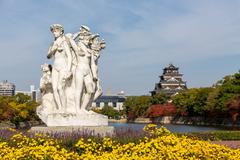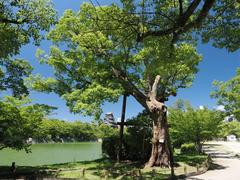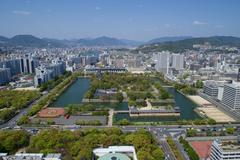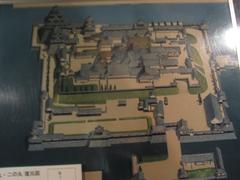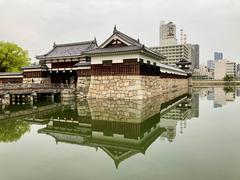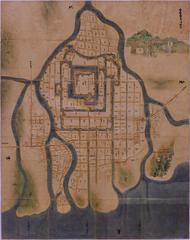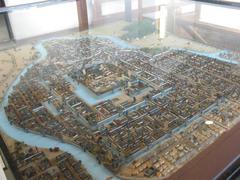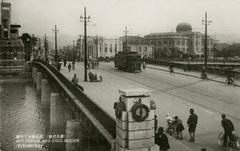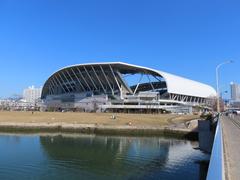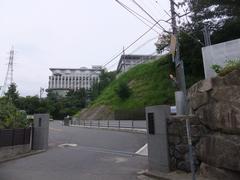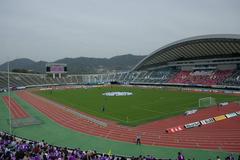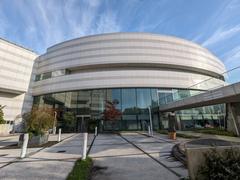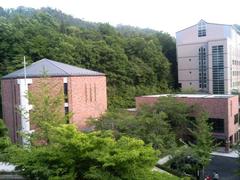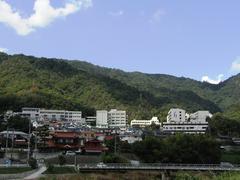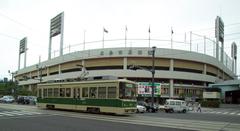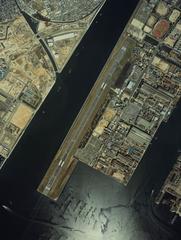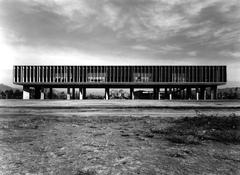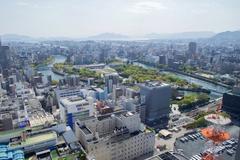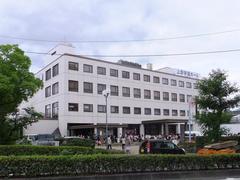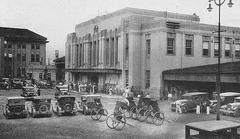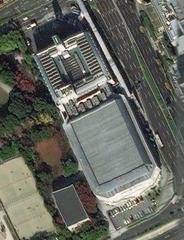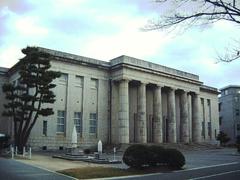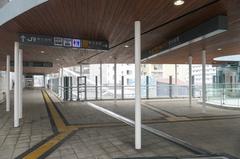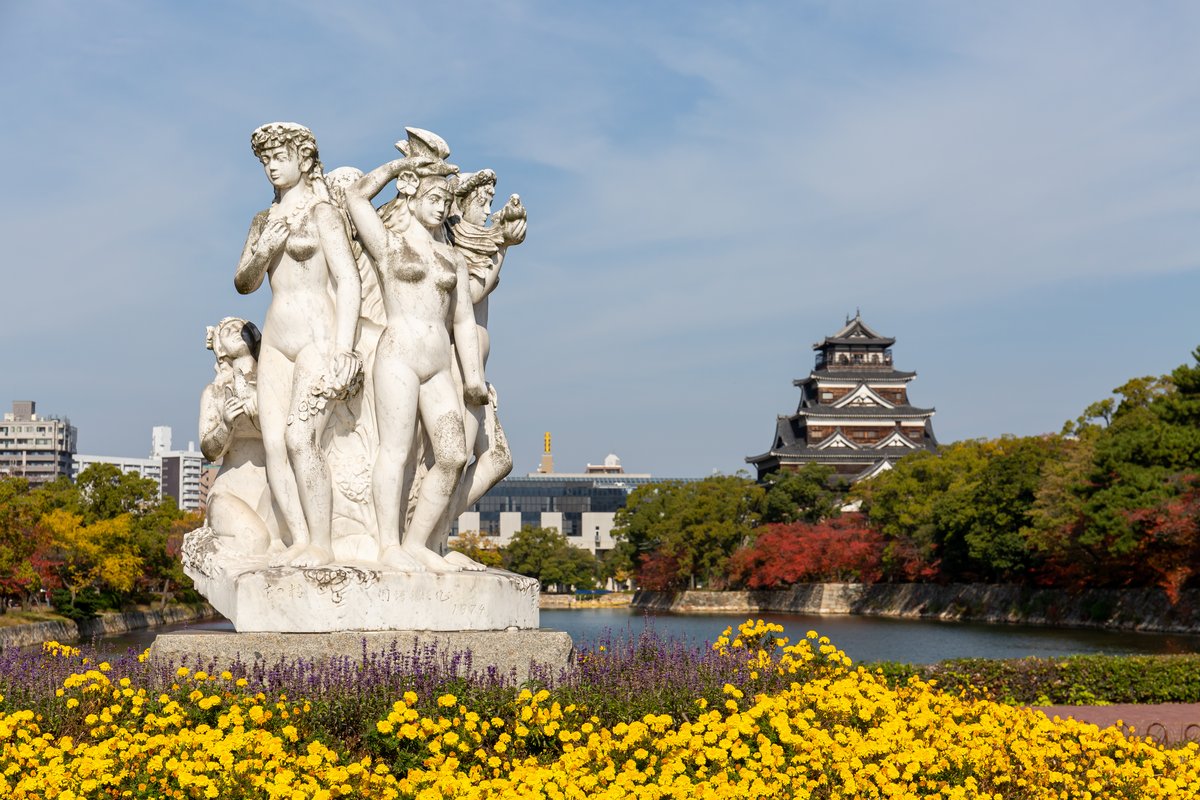
Hiroshima Castle Visiting Hours, Tickets, and Historical Sites Guide
Date: 14/06/2025
Introduction to Hiroshima Castle
Hiroshima Castle, also known as Carp Castle (Rijō), stands as a testament to Japan’s feudal history, cultural resilience, and postwar renewal. Originally constructed in 1589 by the daimyo Mori Terumoto, the castle played a pivotal role in Hiroshima’s development during the Azuchi-Momoyama and Edo periods. Positioned on the Ota River delta, it served both as a military stronghold and administrative center, shaping the city’s grid layout and symbolizing local power and identity (Explore Hiroshima; Jcastle.info).
The castle’s original five-story tenshukaku (main keep) and broad moats reflected sophisticated architecture, blending aesthetics with defensive needs. Over centuries, the Asano clan’s 250-year governance contributed to Hiroshima’s growth as a commercial and cultural hub (Dive Hiroshima).
In 1945, Hiroshima Castle was devastated by the atomic bombing, leaving only stone foundations and a few surviving trees as symbols of hope (KUNA; Facts.net). The reconstructed main keep, completed in 1958, now houses a museum dedicated to Hiroshima’s history and samurai culture (The Tourist Checklist; Japan Guide).
Today, Hiroshima Castle is not only a historical monument but also a vibrant cultural landmark, welcoming visitors with accessible facilities, seasonal festivals, and immersive exhibitions. Its central location, close to sites like Hiroshima Peace Memorial Park, and the presence of hibaku jumoku (atomic bomb survivor trees) make it a must-see destination for those exploring Japan’s layered history (Lestacworld; Japan Travel Note).
Historical Timeline
Founding and Early Development (1589–1600)
- Built by Mori Terumoto in 1589 on the Ota River delta.
- Served as Hiroshima’s political and economic center.
- [Featured a five-story main keep, baileys, stone walls, and moats (Explore Hiroshima; Dive Hiroshima; Jcastle.info).](#featured-a-five-story-main-keep,-baileys,-stone-walls,-and-moats-(explore-hiroshima;-dive-hiroshima;-jcastle.info).)
Edo Period and Asano Clan Rule (1600–1868)
- After the Battle of Sekigahara, control shifted to Fukushima Masanori, and later to the Asano clan who governed for 250 years.
- Saw urban expansion and economic prosperity (Jcastle.info; Dive Hiroshima).
Meiji Era to World War II (1868–1945)
- Repurposed for military use; served as Imperial Headquarters during the First Sino-Japanese War.
- Designated a National Treasure in 1931 (Jcastle.info).
Destruction and Reconstruction (1945–Present)
- Destroyed in the atomic bombing on August 6, 1945 (KUNA; Facts.net).
- Main keep reconstructed in 1958; further restorations in the 1980s–1990s, and designated a National Historic Site in 1996 (Dive Hiroshima; The Tourist Checklist).
Architectural Highlights
The Main Keep (Tenshukaku)
- Five-story structure, reconstructed in 1958.
- Exterior faithfully replicates original design; interior houses a history museum (e-a-a.com; lexion13.xsrv.jp).
- Top floor offers panoramic city views (thebrokebackpacker.com; jrpass.com).
Defensive Features
- Surrounded by moats and robust stone walls.
- Ninomaru (second bailey) and gates demonstrate traditional joinery.
- Defensive elements include narrow windows for archers and multiple bailey layouts for layered defense (city.hiroshima.lg.jp).
Roof and Materials
- Curved, multi-tiered roofs with kawara tiles.
- Adorned with shachihoko (mythical carp figures) for protection and prosperity (e-a-a.com).
Interior and Museum
- Exhibits on samurai armor, weapons, Hiroshima’s history, and traditional architecture.
- Features tatami flooring, sliding doors, and displays in Japanese and English (lexion13.xsrv.jp; Japan Guide).
Castle Grounds
- Home to Hiroshima Gokoku Shrine, survivor trees, and reconstructed turrets.
- Landscaped gardens with cherry blossoms and seasonal flowers (jrpass.com; e-a-a.com).
Visiting Hiroshima Castle: Hours, Tickets, and Access
Opening Hours
- Main Keep: 9:00 AM – 6:00 PM (March–November), 9:00 AM – 5:00 PM (December–February)
- Last Admission: 30 minutes before closing
- Closed: December 29 to January 1 (Travel Yes Please; Japan Travel Note)
Tickets and Fees
- Adults: ¥370
- High school students and younger: Free or ¥180 (varies by source)
- Castle grounds: Free
- Available at the entrance; group discounts may apply (Lestacworld; Japan Travel Note).
Accessibility
- Grounds and museum are generally wheelchair accessible; however, the main keep interior is only accessible by stairs.
- Elevators are available in some areas; assistance can be requested at the visitor center.
Getting There
- By Tram: Hiroshima Electric Railway (lines 1, 2, or 6) to Kamiyacho-nishi or Kamiyacho-higashi, then 10-minute walk.
- From JR Hiroshima Station: About 2 km; 25-minute walk or short taxi ride (Lestacworld).
- Well-signposted and pedestrian-friendly.
What to See and Do
Museum Experience
- Learn about samurai culture, castle construction, and Hiroshima’s urban evolution.
- Interactive exhibits allow you to try on samurai armor and see historical artifacts.
- Observation deck with panoramic city views (Travel Yes Please).
Castle Grounds
- Walk the moat perimeter for scenic views and cherry blossoms.
- Visit the Ninomaru for reconstructed gates and turrets.
- Relax in landscaped gardens with seasonal flora.
Gokoku Shrine and Memorial Trees
- Hiroshima Gokoku Shrine hosts local festivals and ceremonies.
- Survivor trees (hibaku jumoku) stand as living symbols of resilience (Trundle Japan).
Events and Cultural Activities
- Cherry Blossom Festival: Hanami parties in spring (Discover Japan Blog).
- Seasonal Festivals: Historical reenactments, tea ceremonies, and performances.
- Educational Programs: Museum tours and peace education initiatives.
Practical Tips for Visitors
- Language: Most signage and displays are in Japanese and English.
- Facilities: Restrooms, vending machines, and seating areas available; lockers for small bags near the entrance.
- Accessibility: Main keep is only accessible by stairs.
- Photography: Allowed on castle grounds; restricted inside the museum except in designated areas.
- Etiquette: Respect barriers, keep noise low, and do not touch exhibits.
Suggested Itinerary and Nearby Attractions
- Morning: Explore Hiroshima Castle grounds and museum.
- Lunch: Try local restaurants nearby.
- Afternoon: Visit Hiroshima Peace Memorial Park, Shukkeien Garden, and Hiroshima Museum of Art.
Frequently Asked Questions (FAQ)
Q: What are Hiroshima Castle’s visiting hours?
A: 9:00 AM–6:00 PM (March–November), 9:00 AM–5:00 PM (December–February); last entry 30 minutes before close.
Q: How much are tickets?
A: ¥370 for adults; free or ¥180 for students; castle grounds are free.
Q: Is the site accessible for wheelchairs?
A: The grounds are accessible; the main keep interior is not.
Q: Can I take photos inside?
A: Only in designated areas inside the keep; allowed throughout the grounds.
Q: Are guided tours available?
A: Group tours may be arranged in advance; check with the visitor center.
Upcoming Renovations
The main tower (tenshukaku) will close in March 2026 for seismic upgrades and a traditional wooden reconstruction. Grounds and cultural events will remain open during renovations (Japan Travel Note).
Summary and Recommendations
Hiroshima Castle is a profound symbol of resilience, peace, and historical continuity. Its reconstructed main keep and museum offer insight into feudal Japan and Hiroshima’s rebirth. The castle’s central location, accessible facilities, and proximity to other major attractions make it ideal for a day of discovery in Hiroshima. Plan your visit to experience cherry blossoms, historical exhibits, and the tranquility of the castle grounds. For updates on renovations, hours, and events, consult the official website or download the Audiala app.
Sources and Further Reading
- Explore Hiroshima
- Jcastle.info
- Dive Hiroshima
- KUNA
- Facts.net
- The Tourist Checklist
- Japan Guide
- Lestacworld
- Japan Travel Note
- e-a-a.com
- lexion13.xsrv.jp
- thebrokebackpacker.com
- jrpass.com
- city.hiroshima.lg.jp
- Travel Yes Please
- Trundle Japan
- Discover Japan Blog
- Kanpai Japan
- Japan Travel Explorer
- Hiroshima Peace Memorial Museum
For more travel tips and updates, download the Audiala app and follow us on social media. Plan your Hiroshima adventure today and immerse yourself in the enduring spirit of Hiroshima Castle!
